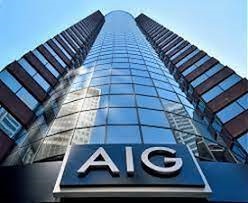AIG200: $1.3 Bn in digitalization to regain past glory

 During the financial crisis, American International Group (AIG) could only be saved by a government bailout. Since then, the prevailing sentiment has been that even without the crisis, AIG would have destroyed substantial value notwithstanding credit default swaps, largely on account of recurring material issues in its core operations. A decade after the crisis, AIG continued to struggle to generate an acceptable return.
During the financial crisis, American International Group (AIG) could only be saved by a government bailout. Since then, the prevailing sentiment has been that even without the crisis, AIG would have destroyed substantial value notwithstanding credit default swaps, largely on account of recurring material issues in its core operations. A decade after the crisis, AIG continued to struggle to generate an acceptable return.
Due to the protracted duration of AIG’s underperformance, the market hasn’t entirely acknowledged the improvement that management has achieved. In 2020, as part of its massive AIG200 initiative, AIG invested a $1.3 billion over a three-year period, to revamp core processes, technology infrastructure and services. The moniker AIG200 symbolizes the insurer’s next 100 years after its centennial in 2019. The emphasis is meant to be on investments that enhance the customer and distributor experience, with a significant bias on investing in modernized and digitized workflows.
Before AIG200 started, efforts were aimed at retracting its “go big” strategy, shrinking of risk appetite, and increasing reinsurance use. This caused a short-term impact of increasing combined ratios. The expense ratio crept up during this de-risking phase, as more aggressive use of reinsurance lowered net premiums. On the other hand, it created a solid base to drive underwriting improvement, especially in commercial lines business, historically its worst performer. Disciplined risk selection has resulted in better underlying loss ratios over time. While AIG made significant progress, it had not fully closed the gap with market leaders.
The work on AIG200 began in 2020 with 10 core programs. With a one-time cost of $1.3 billion, run-rate savings were forecast to be $600 million and $1 billion cumulative in 2021 and 2022. Approximately 75% of the savings are expected in the P&C segment. Based on its projections, it should reduce combined ratio by about 160 basis points in line with management’s target for a combined ratio below 90% by the end of this year. Assuming a 5% estimate for average catastrophe losses, it would result in a combined ratio a little below 95%, putting AIG roughly in line with peers.
Within AIG, its life insurance and property and casualty operations have performed very differently, with P&C being the laggard. P&C operations combine both commercial and personal lines, but commercial operations form the largest portion, accounting for two thirds of net written premiums in 2020. Out of the 10 programs, three have a focus on the P&C business. These programs involve building out a standard commercial underwriting program designed to enable and improve better underwriting analysis, enhanced “digital first” efforts for AIG’s Japanese business, and improved capabilities in AIG’s Private Client Group.
Commercial P&C insurers looking for opportunities to build a competitive edge, focus on the least commoditized segments. A specialty line such as excess and surplus (E&S) lines, is one such segment. Outside of Lloyd’s, AIG is the largest E&S underwriter in the United States. Being among the largest commercial P&C underwriters means that it can leverage its proprietary database to better price and select risks than smaller peers. Investments in digitalization such as AIG100 should allow it to better exploit this potential advantage. Besides, AIG has among the widest geographic reaches, lending it an advantage in garnering business from large MNCs.
Companies tackling digital disruption make brisk changes in key areas—deploying innovative digital business models, forming agile squads and deploying new analytics. Yet, after tasting initial success, these transformation programs frequently lose momentum, due to legacy issues such as technology infrastructure, misaligned operating models or a change-resistant culture. Competing against digital attackers ultimately requires transforming both hard capabilities (technologies) and soft capabilities (operating models) to create a conducive business environment for change enabled by digital technology. AIG200 makes for an interesting turnaround study, relevant to incumbents embarking on large change programs.
You get 3 free articles on Daily Fintech. After that you will need to become a member for just US$143 a year (= $0.39 per day) and get all our fresh content and our archives and participate in our forum.

